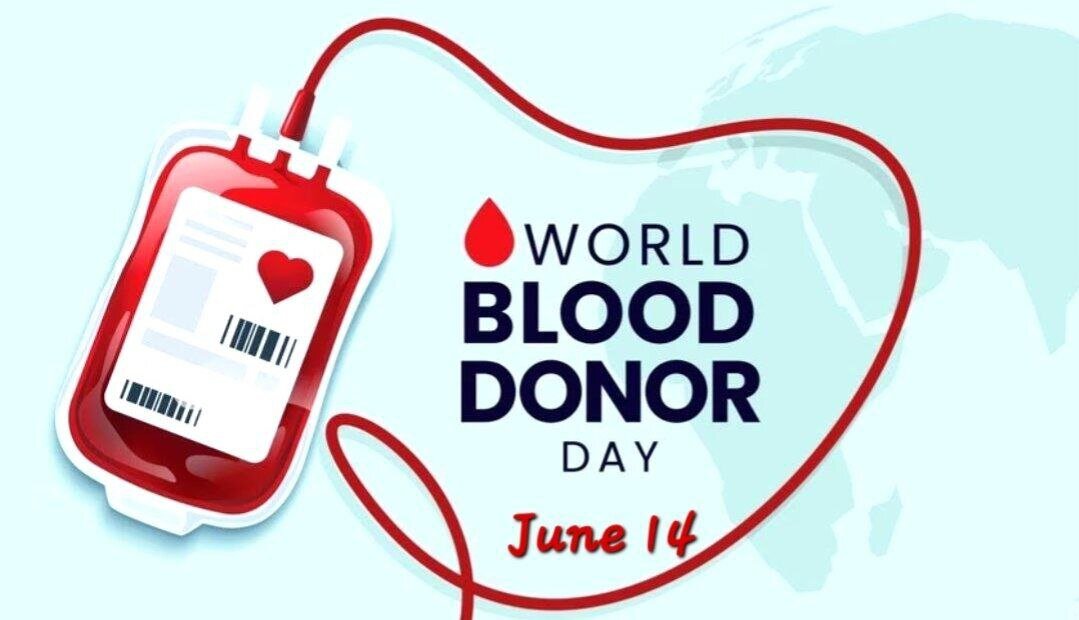World Blood Donor Day honors hope given with every drop of blood

TEHRAN –Celebrated on June 14 every year, the World Blood Donor Day pays tribute to the millions of voluntary, unpaid blood donors who give others a second chance at life. This year, it honors hope, the kindness given with every drop of blood.
This year’s theme, ‘Give blood, give hope: together we save lives’, highlights the life-changing impact of blood donation.
Millions of patients around the world rely on blood transfusions every year, and hope flows through every donation.
The donors’ generosity saves lives, strengthens communities, and embodies the spirit of solidarity. It’s a day to tell them thank you, but also to spotlight the ongoing, urgent need for safe, regular blood donations.
The main objectives of this year’s campaign include raising public awareness about the critical need for blood and plasma donations and the impact they have on patients’ lives; encouraging both new and existing donors to give blood regularly, helping to ensure a stable and sufficient blood supply; and highlighting the positive impact of blood donors on the health and well-being of others and promote the values of solidarity, compassion, and community through blood donation.
It also aims to mobilize support from governments and development partners to invest in and sustain national blood programs to achieve universal access to safe blood transfusion worldwide.
WHO lauds IBTO’s achievements
In January, the World Health Organization representative, Jaffar Hussain, admired the Iranian Blood Transfusion Organization’s (IBTO) leadership in blood safety and transfusion services, and highlighted their remarkable achievement of a 100 percent voluntary, non-remunerated blood donation system, a testament to the principles of universal health coverage in action.
He also thanked the blood donors, whose selflessness serves as an inspiration to all.
Admiring the IBTO’s efforts and expertise in providing services to patients with rare blood types, the official underscored Iran’s capacity to serve as a model for other nations in the realm of blood transfusion and rare blood management.
Addressing National Rare Blood Day on January 22, the official praised the country’s steadfast commitment to equitable healthcare access, ensuring that no one is left behind, regardless of their blood type.
The official commended the country’s unwavering dedication to tackling the unique challenges surrounding rare blood, emphasizing the critical importance of collaboration, innovation, and unwavering determination in this global endeavor, the WHO website announced in a press release on January 27.
In 2024, Bashir Haji-Beigi, the IBTO spokesman, said IBTO is still known as a regional training authority of the World Health Organization in blood transfusion medicine.
Haji-Beigi said conducting nucleic acid testing (NAT), a molecular technique for screening blood donations to reduce the risk of transfusion-transmitted infections; antibody screening to ensure the recipient and the donor’s blood are compatible to prevent complications from blood transfusion; as well as genetic sequencing using Next Generation Sequencing (NGS) method for human leukocyte antigens (HLA) to check tissue compatibility and facilitate hematopoietic stem cell transplantation for patients are among the activities that have been put on the agenda since last year.
Blood donation rises by 1.5% yr/yr
Some 2.36 million Iranians donated blood over the past Iranian calendar year (March 2024-March 2025), representing a 1.5 percent increase compared to the previous year.
Tehran and Fars, Khorasan Razavi, Isfahan, Mazandaran, and Khuzestan provinces made the largest contributions, IRIB reported.
Over the past (Iranian) year, some four million blood units, including blood products, were transferred to medical centers, IRIB quoted Haji-Beigi, as saying.
Men made up 95 percent of blood donors, while women’s contribution amounted to five percent. Women in Lorestan province, North Khorasan, and Sistan-Baluchestan had the highest share, he added.
Highlighting the need for negative blood types, the official said 90 percent of donors had positive blood.
Leave a Comment